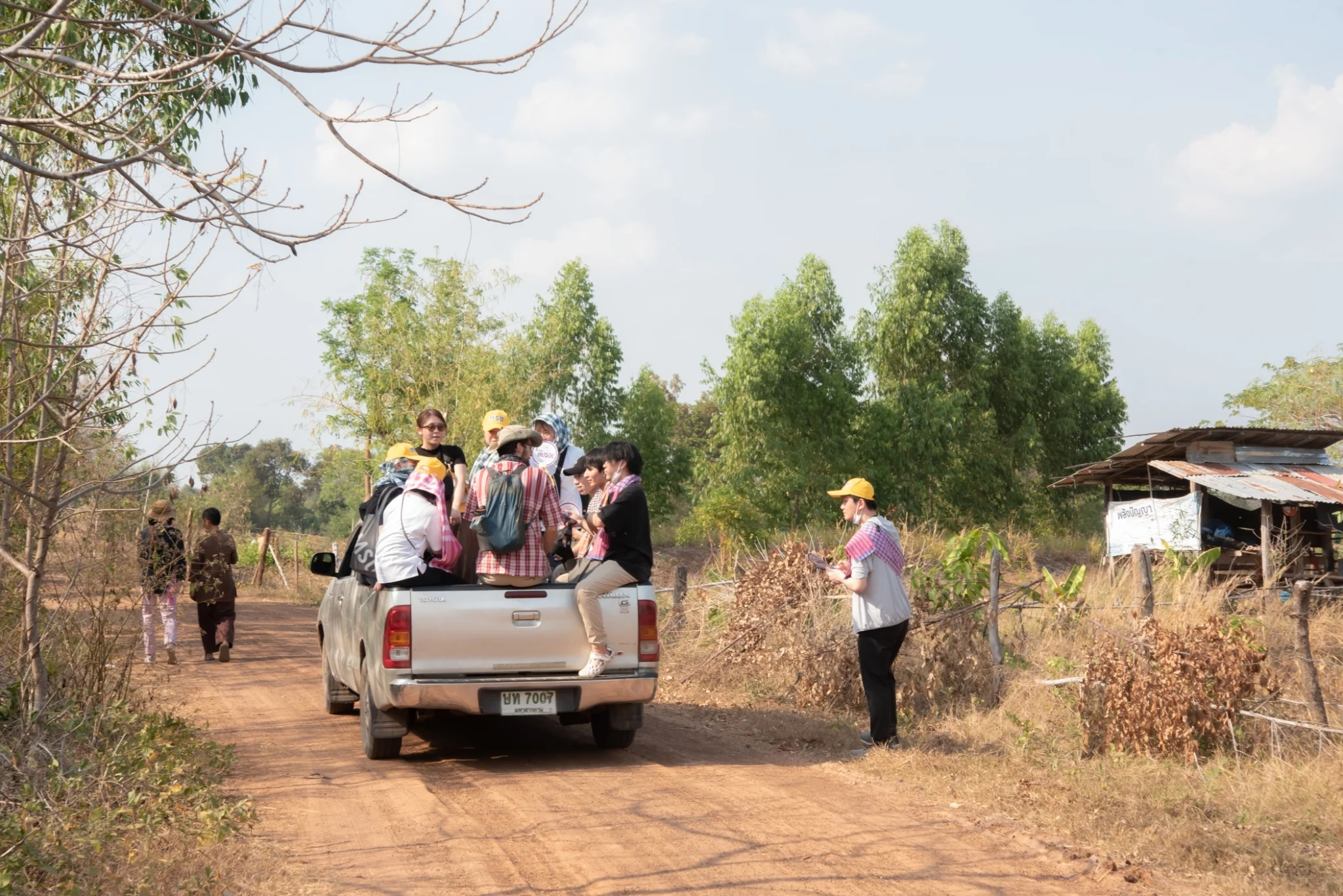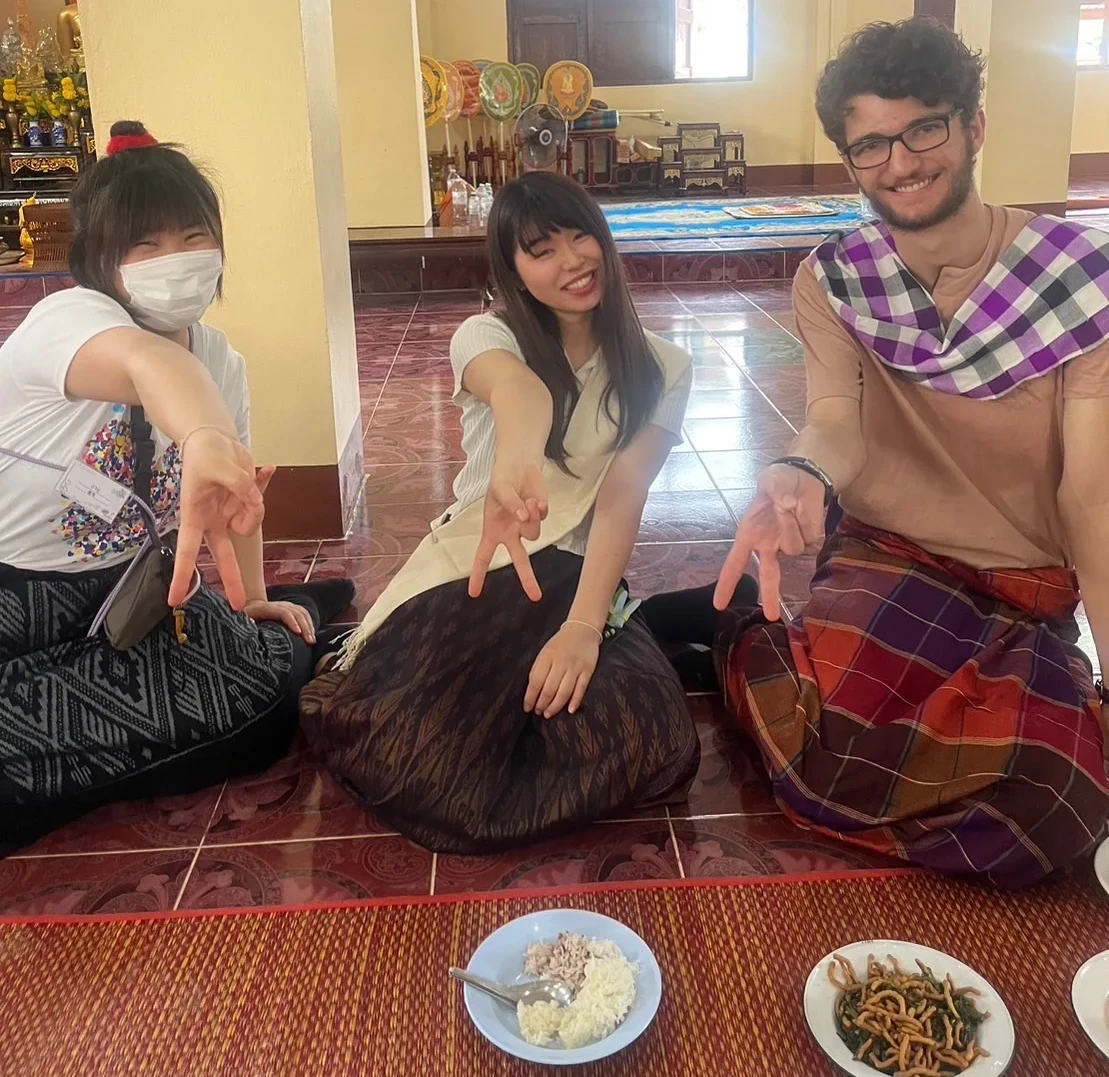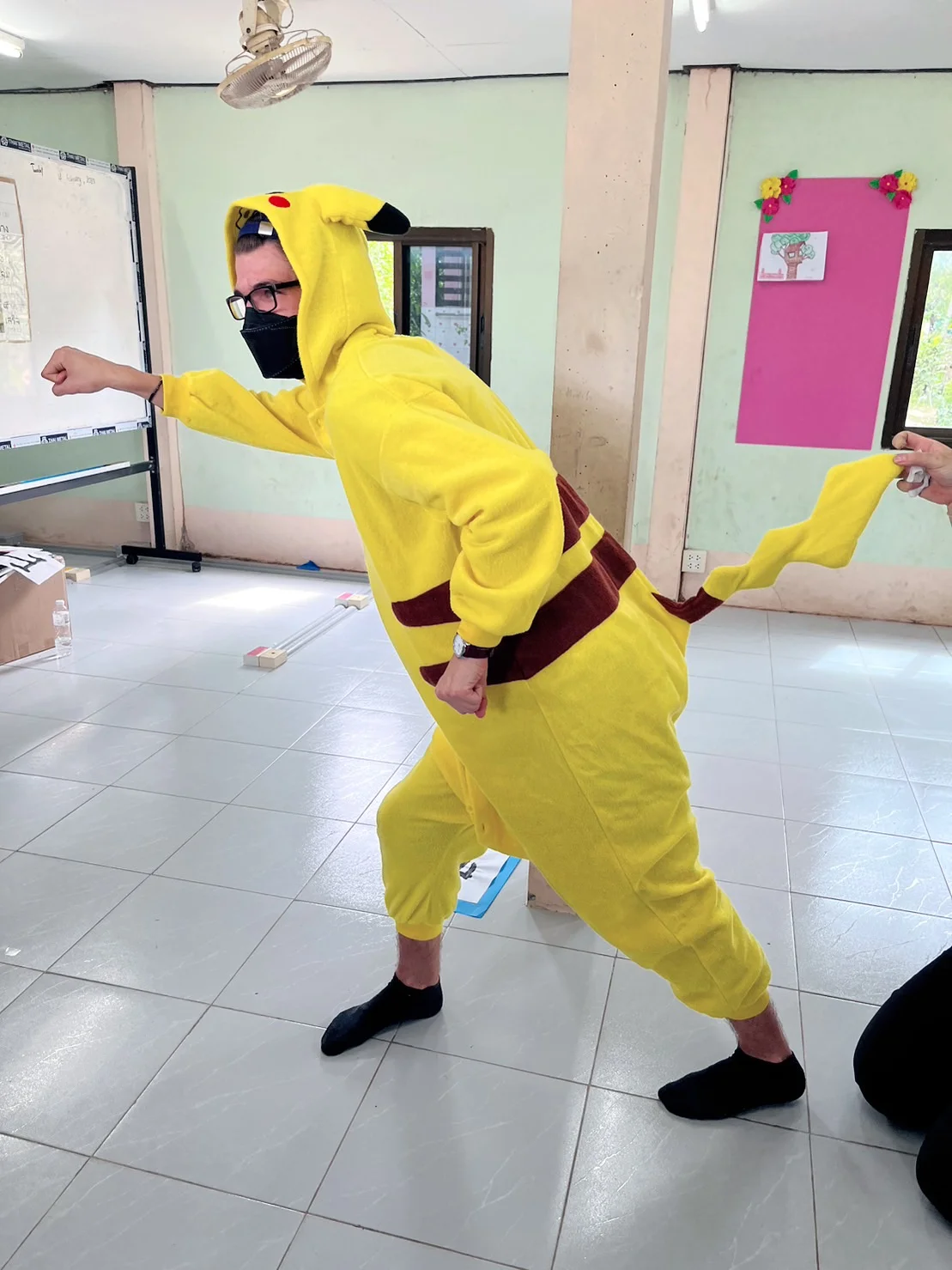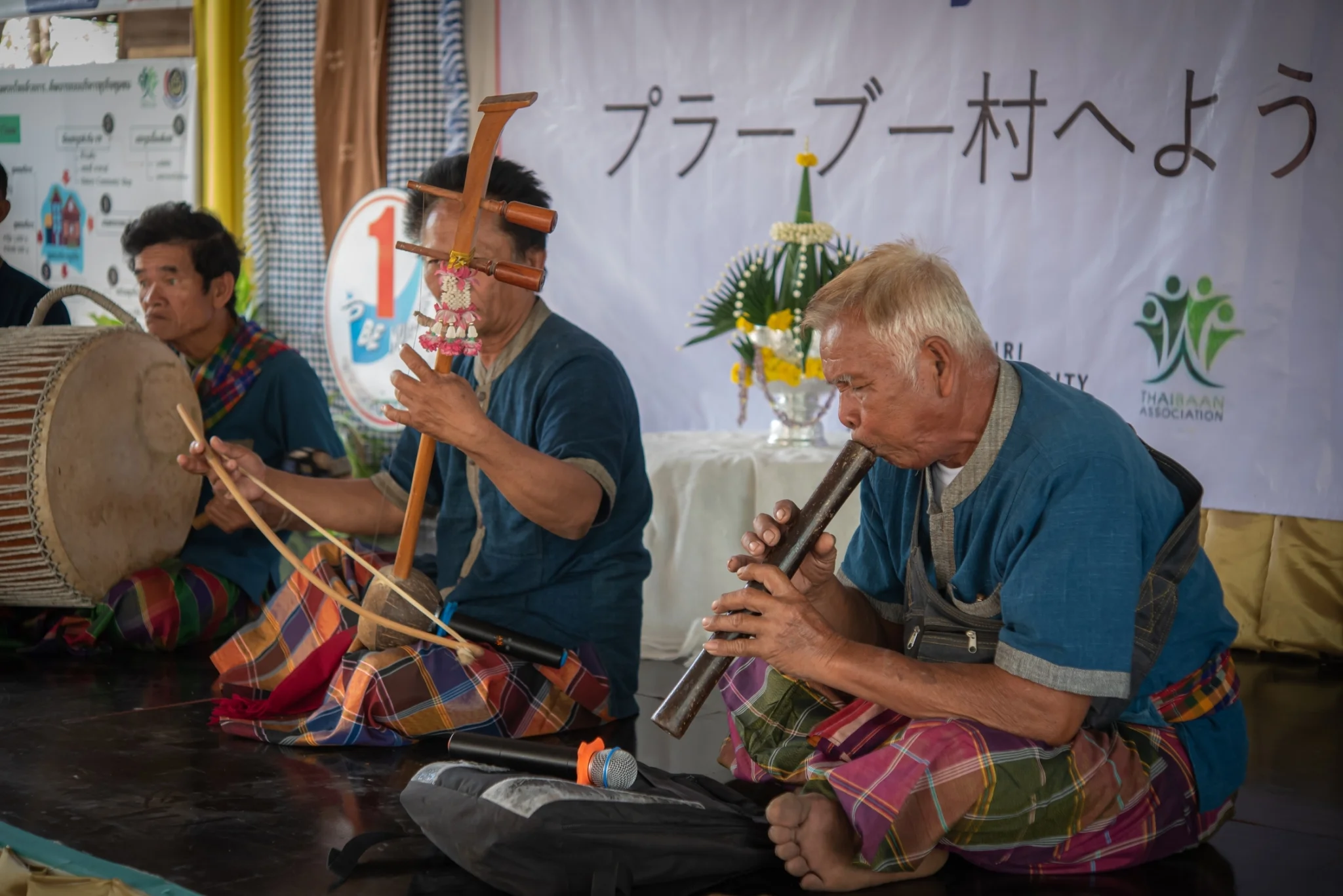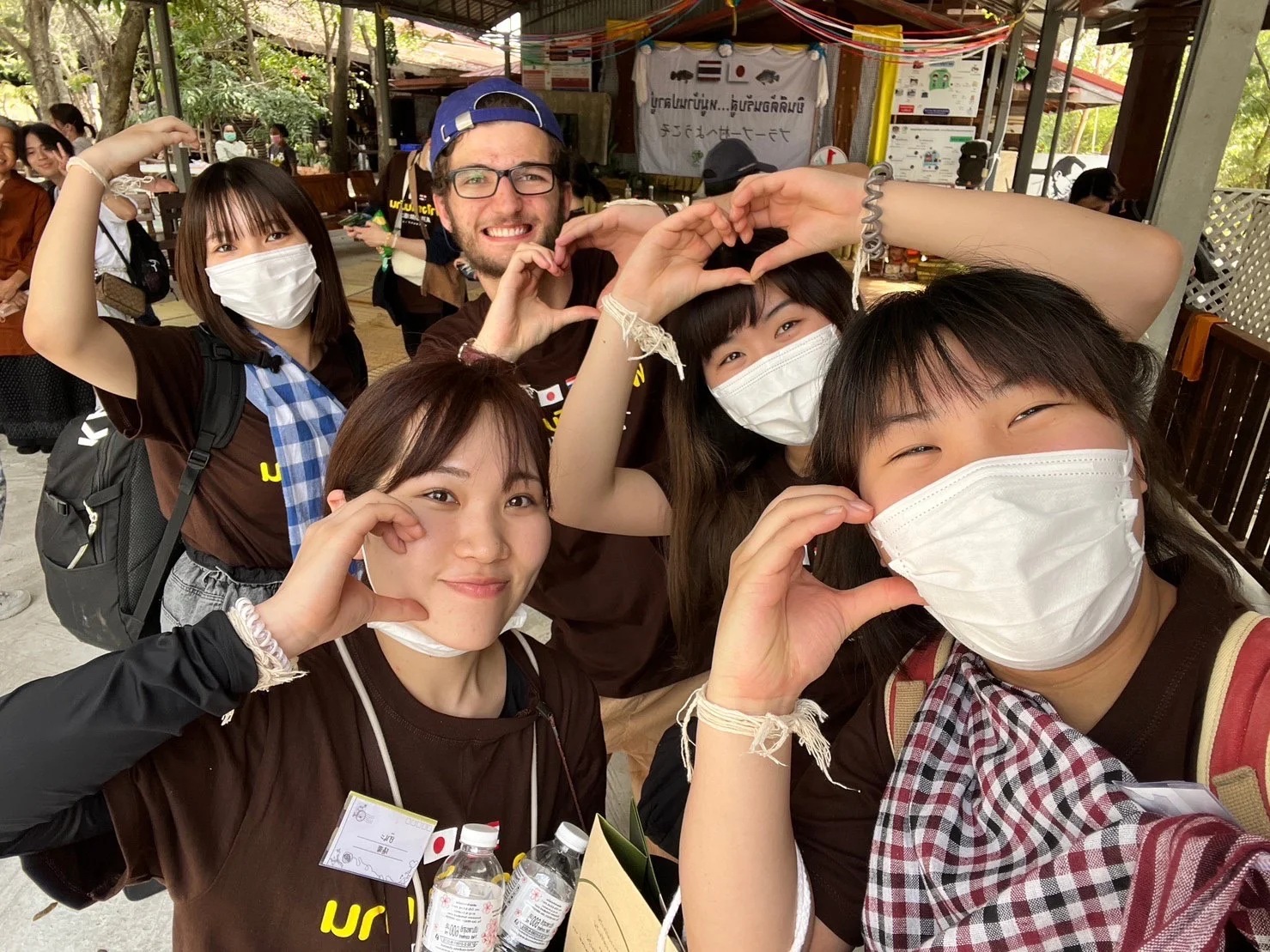Hey, everyone. I apologize for the delayed post, but as I’m sure you can imagine, my last few weeks here have been incredibly busy. Nevertheless, I hope you enjoyed this (slightly) late post, but you know what they say: better late than never.
This week, the Thai Baan Association hosted an international exchange with some Thai and Japanese students. In total, there were about forty professors and students from Tenri University in Japan and Mahasarakham University in Thailand. Everyone stayed here in Plaboo Village for five days and either slept in a homestay or stayed at the association. Outside of making sure the food wasn’t too spicy, no special accommodations were made, so everyone lived like the people in the village. There were special activities and events every day this week—so many that I can’t even write about them all—that kept everyone extremely busy. Even so, I had an incredible week getting to learn more about both Thai and Japanese culture, so I hope you enjoy a small glimpse into this great week of intercultural exchange.
Some Activities
Tour of the Farm and Village
After the opening ceremony, we went for a tour around the village. This meant piling everyone into the bus and the bed of the pickup and going for a ride down the infamous Thai roads. The first stop was Mae Nuch’s farm, where she talked about rice farming and how she lives simply. We were able to walk around and look at the water buffalo, cows, and all the different fruits.
Next, we went to a nearby fish farm and watched the man catch some fish by tossing some seed into the pond and then casting a net. The journey was completed with a trip to the forest, where the people from the village are cremated. Here, we learned about how the people of Plaboo care for their dead and how cremation spots are determined by dropping eggs.
The following day, we went for a walk around the village and were able to meet some of the important leaders. We were also able to see the daily lives of different families. For example, one family works together to make door mats while another runs a small convenience store. There was a family that makes silk fabric, and a woman who was processing “Isan walnuts.” Since I’m usually gone at school, it was neat to learn what people in the village do during the week.
Buddhism Exposure
Wednesday morning began bright and early at 6 a.m. Everyone gathered outside the association in order to “make merit.” This involved presenting the village’s monks with their morning alms. Mats were laid out in the road, where we knelt and presented the monks with khao niao (sticky rice) and other foods. Once the monks received their food, we all performed wais while the monks blessed us with their Pali chants.
After the almsgiving, we all made our way to the village’s temple to participate in the morning service. All the students gathered on the floor with some local villagers while the latter chanted. This was reciprocated by the monks, who began chanting and praying as well. The coolest part was getting to participate in a ceremony that makes merit for the dead and ancestors. This involved slowly pouring water from one vessel into another while the monks chanted. This blessed the water, which was then poured on the trees outside for the spirits.
Once the service was finished, we ate breakfast on the floor of the temple. The food was all the Isan dishes that I’ve come to love. I did get to try a new soup that was made with ant eggs. Sure, for a Westerner, it doesn’t sound appetizing, but I promise it was delicious. All in all, dressing in a traditional Isan sarong and pakama, attending a Buddhist service, and sitting on the floor to eat sticky rice with my fingers was an authentic experience that I’m so grateful to have participated in.
Visiting a School
On Thursday, we visited Nong Bua Kuu School so the Japanese students could interact with and teach some kids. In typical Thai fashion, the trip at the school began with a long opening ceremony that focused on thanking everyone involved in the project. Afterwards, the Japanese students split into three different groups, which the kids at the school rotated through.
The first group focused on the different seasons in Japan. They began by showing colorful posters and explaining the atmosphere of the country. They then told the story behind the Japanese festival Tanabata and some of its customs. This included writing wishes on a piece of paper and hanging them on bamboo. The group concluded by teaching everyone the traditional Tanabata song.
The second group showed maps of Thailand and Japan. They explained the flights and touched on the significance of origami. This naturally led into a game where the kids tried to see how far they could throw paper airplanes. They then kept the fun going by discussing Japanese snacks. They hosted a small trivia game, with the winners getting to try some snacks and take some stickers. Needless to say, this group was a hit.
The third and final group focused on Japanese calligraphy. They dressed all the kids in a plastic apron and passed out calligraphy supplies. Next, they showed us the steps for writing the word for mountain (山), which is done in three strokes. In attempting to write this word, I quickly learned that my poor penmanship is now evident in two languages, as almost all of my students were able to write prettier than me. Nevertheless, it was fun getting to do Japanese calligraphy, and the kids loved it as well.
The last major event at the school involved setting up a fence with some of the parents from the village. I was able to get my hands dirty by helping set the concrete posts and rails. Although I was a bit perplexed about how the mortar mix was just dirt and sand, I still enjoyed working with the parents, and they were happy to learn more about me through translation (thanks, Justin!).
Closing Ceremony
Like all great events, the week was finished with a giant closing ceremony. It started off with traditional Isan music and Thai dancing, which were upbeat and lively. People stood up and began dancing in a large circle. Of course I joined in, but it wasn’t pretty. Thai dancing is difficult! After the music finished, Pa Lam and the professors took some time to thank everyone and recap the week. Once finished, some students from Bua Kuu School came and danced on stage. It was quite impressive.
Next, all the host families and some elders from the village came to do a white bracelet ceremony. They all sat in a line, and the students moved from person to person, receiving blessings and a white bracelet from the elders. During this process, the elders call upon the angels and spirits to come into the bracelet and bring good luck, happiness, good health, etc. to the wearer.
Lastly, after a brief fashion show, the ceremony was closed by singing “Auld Lang Syne.” In both Thailand and Japan, the song, albeit with different lyrics, is sung to close various events. Everyone gathered into a big circle, joined arms, and started swaying and singing. The lyrics moved smoothly from one language to the next, first in Thai, then in Japanese, and finally in English (take a guess who sang it). Honestly, it was one of the most beautiful moments I’ve been a part of. It really showcased our unity despite the national, cultural, and linguistic differences.
Takeaways
I’ve been in Thailand for almost six months now, but this week was really the first time I had any substantial interaction with anyone my age. Naturally, I’m not discounting my relationships with anyone else here, but sometimes you just need to be able to talk, laugh, and have fun with people your age. It was also cool getting to speak with some of the Thai students and hearing a younger perspective about the country as well as learning about Japan and how it compares to the United States.
All in all, I think my biggest takeaway from this experience is that even though the Thai students, Japanese students, and myself come from different countries, have different backgrounds, and have different cultures, there was still so much we all had in common. From playing an Uno game in four languages to laughing over the differences in eating styles, all these differences came together with our shared enjoyment of each other to create something truly special.
Enjoyed the post? The best way you can show your support is by sharing the article and liking and commenting below.
comments powered by Disqus
